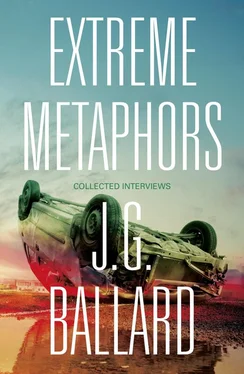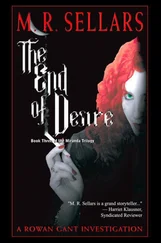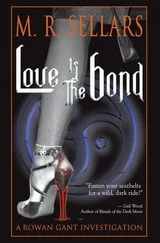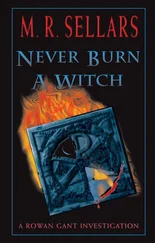Patiently, Ballard clarifies the true ‘togetherness’ of the technological age: people pressed together in traffic jams, aeroplanes, elevators, hemmed in by technology, an artificial connectedness. Protesting, Orr says she doesn’t want to be in a traffic jam, but neither does she want ‘to be alone on a dune, either’. Ballard counters: ‘being alone on a dune is probably a better description of how you actually lead your life than you realise … The city or the town or the suburb or the street – these are places of considerable isolation. People like it that way, too. They don’t want to know all their neighbours. This is just a small example where the conventional appeal of the good life needs to be looked at again.’ The exchange is significant because, with hindsight, we can determine Ballard testing the hypothesis behind Concrete Island , the follow-up to Crash , and a concentrated study in willed social isolation (marooning himself under a motorway overpass, and deciding to stay there indefinitely, Concrete Island ’s protagonist finds new reserves of psychological strength in the process). Here, his interview-art is in full effect: running the test, storing the results, turning the tables on his interrogator.
In later interviews, Ballard would refine his views on affirmative social isolation, enthusing about the possibilities of private media and suggesting that the average home would soon acquire the processing power of a small TV studio, enabling us to broadcast our intimate fantasies to one another. In 1982 he told V. Vale that ‘Everybody will be doing it, everybody will be living inside a TV studio. That’s what the domestic home aspires to these days … We’re all going to be starring in our own sit-coms, and they’ll be very strange sit-coms, too, like the inside of our heads. That’s going to come, I’m absolutely sure of that, and it’ll really shake up everything.’ It is this vision, not Toffler’s, that continues to resonate.
Yet for Ballard there was always a dark side. Today, online persona factories frame a fluid performativity enabled by the irresistible connective tissue of social media. What is YouTube – now inevitably banal, smoothly integrated into the fabric of everyday life – if not the medium for each of us to design and star in ‘our own sit-coms’? Anyone familiar with Ballard’s brutal short story ‘The Intensive Care Unit’ (1977) will surely recognise the dark shadow of those ‘very strange’ productions (indeed, of what we now recognise as social media), with its disturbing warning about the dangers that await when we have the capacity to broadcast ‘the inside of our heads’. Ballard’s futurism, always potent, extremely well reasoned and argued – frequently alarming – was, above all, uncannily accurate. He did not flinch, and he expected us not to, either.
From the moment I first read a Ballard interview (before any of his fiction, in fact), his slyly subversive conversational style colonised my thoughts and I became obsessed with tracking down every interview he ever did (my search continues; this collection merely scratches the surface). Back then, naive and inexperienced, I convinced myself that Ballard’s interviews were superior to his novels. Sacrilege today, of course, but there was a case to be made, for I deeply admired how he worked the interview format with a neurosurgeon’s skill, finessing philosophical positions and aesthetic strategies that would later find purchase in his work, triaging real-world scenarios into the dark revelations of his fictional mirror worlds. I would find a new fix in obscure zines. I would painstakingly transcribe his radio and TV appearances. I would badger my elder Ballard-watching associates for access to their magnificent collections, but I had a lot of catching up to do. Henry James gave just three interviews in his life; there are at least two hundred published Ballard conversations. Before he’d even uttered a word, Don DeLillo once presented an interviewer with a card that warned: ‘I don’t want to talk about it’; Ballard, in his heyday, could talk for hours, plying his interrogators with Scotch to keep things on an even keel.
He was courteous, approachable and generous with his time, and patient in explaining the terms and conditions of his work, although he once told an interviewer that ‘the ideal interview is one where I remain silent and you just ask a stream of hundreds of questions. Or – the interviewer hasn’t read the books he’s asking questions about, and the author can’t remember them!’ (He came close to achieving this goal in one of the more unusual interviews in this collection, the series of yes/no answers he gave to Sam Scoggins in 1983, an exercise in stylised repetition that, like a tape loop of music, grows in the imagination the more it is repeated.) Of course, he was being flippant. His real interest in making that remark was probably psychoanalytical, wanting to uncover the hidden intentions behind a particular line of questioning, or to turn the process into an autodidactic, quasi-surrealistic game in which the outcome for both parties is dependent on each person’s capacity to learn, the same result as in his fiction.
He championed the independent press, often granting interviews to obscure photocopied fanzines and other small publications. A review of the publication history of his interviews reveals titles like Speculation , Corridor , Cypher , Vector , Search & Destroy , Aether SF , Etoile Mecanique , Hard Copy , The Hardcore , Hard Mag , Albedo One . These are labours of love on the parts of their publishers, mimeographed enthusiasm, largely forgotten, even in the all-seeing digital age. After Empire of the Sun , of course, mainstream newspapers and magazines clamoured to speak to him, but still he held court with the underground. In the early days, it was the SF zines that came knocking on his door, but after RE/Search, specialists in ‘industrial’ culture, published Vale’s remarkable 30,000-word interview with him in 1984, punk and music periodicals picked up the pace. Ballard welcomed them, for he did not think his art was ‘pure’ and could speak for itself, nor did he appear to think it was degrading to explain his work, or that he had a certain type of audience, high or low.
In a 2010 article on ‘why novelists hate being interviewed’, Tom LeClair notes a recent trend: novels that portray interviewers as ‘irresponsible or unworthy of respect’. According to this ‘genre’, interviewers are hapless lackeys of the evil media machine, pilloried by long-suffering novelists because they haven’t read the books they’re supposed to be asking about, or they put words into the novelist’s mouth, or they want to talk about gossip and nothing else, or the novelist is forced to do the interview out of contractual obligation to the publisher. Finally, LeClair wonders ‘if the novelists’ animus against interviewers might be displaced animus against passionately curious readers, those who want to learn about authors to better comprehend their books. It appears that some novelists want to be understood, but not too thoroughly understood. [Philip Roth] suggests a darker, Oedipal motive for the animus: “Old men hate young men”.’ Such charges cannot be levelled at Ballard, who talked to almost anyone willing to make the trip down the motorway to his home in Shepperton or to ring the phone number he nonchalantly allowed to be listed in public phone directories right up until his death.
Of course, earlier in his career, he had little time for ‘fandom’ as at least one interview in this collection attests, but he was always prepared to converse with those genuinely interested in the mysterious forces propelling his work, which he catalogued in his prose poem ‘What I Believe’ (1984). There, we find an index of his obsessions, including the ‘power of the imagination’; motorways; birds (indeed, flight of all kinds, powered and unpowered); the ‘confidences of madmen’; ‘the beauty of the car crash’; abandoned hotels; forgotten runways; Pacific islands; ‘all women’; supermarkets; the ‘genital organs of great men and women’; the death of the Space Age; Ernst, Delvaux, Dali and de Chirico; and ‘all the invisible artists within the psychiatric institutions of the planet’. In fact, that small list could be a mini-index to this present volume, in which all its elements are present and correct, and which in turn function as launchpads for other explorations, other themes: psychological, ontological, metaphysical, sociological, political, satirical, comical.
Читать дальше












